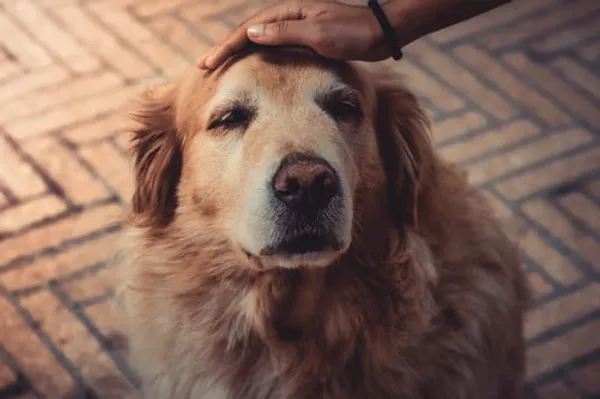Understanding Dog Behavior: The Key to Successful Training
Creating a harmonious environment for both you and your dog begins with a deep understanding of canine behavior.
By exploring the fundamental aspects of how dogs think and act, you can plan effective training strategies that address any behavior issues your furry friend may be experiencing.
The Importance of Understanding Canine Behavior
Understanding dog behavior is crucial for successful training and building a positive relationship with your canine companion.
Dogs communicate through a combination of vocalizations, body language, and other signals.
By learning to interpret these cues correctly, you can respond to your dog’s needs effectively, reducing the likelihood of misunderstandings and behavioral issues.
Many behavior issues stem from a lack of understanding between dogs and their owners.
It’s essential to recognize that dogs have their own ways of perceiving the world.
A well-versed dog owner will benefit from understanding these behavioral cues, leading to better training outcomes and a more peaceful coexistence.
Fundamental Aspects of Canine Behavior
In order to address behavior issues and implement effective training techniques, it’s imperative to explore the fundamental aspects of canine behavior.
Dog Communication
Dogs primarily communicate through body language. This includes tail position, ear orientation, and other physical signals.
Understanding these signals can provide insight into your dog’s emotional state:
Tail Position:
– A wagging tail often indicates happiness, but a high tail can signify excitement or agitation.
– A lowered tail may indicate fear or submission.
Ear Orientation:
– Erect ears usually indicate alertness, while ears pulled back may suggest fear or submission.
Posture:
– A relaxed body posture shows comfort, while a rigid body stance may indicate tension or impending aggression.
Recognizing these signs can enhance communication and reduce the likelihood of behavioral issues.
Socialization
Socialization is a critical aspect of a dog’s development. Early experiences significantly influence a dog’s behavior, helping them to become well-adjusted.
Proper socialization involves exposing your dog to various environments, people, and other animals. This exposure helps prevent fears and anxiety later in life:
- Start Early: Puppies should begin socialization around 3 to 14 weeks of age.
- Continuous Exposure: Socialization is a lifelong process. Dogs should be regularly exposed to different experiences and environments.
Reinforcement Learning
Canines learn best through reinforcement. This can be either positive (rewarding desired behaviors) or negative (discouraging undesirable behaviors).
Understanding the principles of reinforcement can significantly improve your training results:
- Positive Reinforcement: Reward your dog with treats, praise, or playtime for displaying good behavior.
- Negative Reinforcemen: Avoid using harsh methods; instead, redirect undesirable behaviors to more acceptable ones.
Employing these techniques effectively can curb many behavior issues.
Common Dog Behavior Issues and Their Solutions
Even with a solid understanding of canine behavior, issues may arise. Here are some common problems and strategies to address them.
Aggression
Aggressive behaviors can stem from fear, territorial instincts, or frustration. It’s vital to identify the triggers for aggression and manage those situations:
- Professional Assessment: Consult a dog behavior specialist to evaluate and address aggression issues.
- Behavior Modification Techniques: Employ desensitization and counter-conditioning.
Anxiety and Fear
Separation anxiety, noise phobias, and general fears can severely impact a dog’s quality of life. Addressing these issues is critical:
- Create a Safe Space: Establish a comfortable environment where your dog can feel secure.
- Desensitization: Gradually expose your dog to anxiety-inducing stimuli while offering positive reinforcement.
Destructive Behaviors
Chewing, digging, and other destructive habits can have various causes, including boredom and anxiety:
- Provide Enrichment: Ensure that your dog receives plenty of physical exercises and mental stimulation.
- Preventative Measures: Use appropriate items for your dog to chew on to distract from destructive behaviors.
Training Techniques for Dog Behavior Issues
Effective training is the backbone of managing canine behavior. Here are essential techniques to consider.
Positive Reinforcement
Utilizing positive reinforcement is one of the most effective training strategies. This involves rewarding desired behaviors to encourage their recurrence:
- Immediate Rewards: Offer treats or praise immediately when your dog exhibits the desired behavior.
- Consistency: Ensure that all family members participate in training consistently.
Behavior Modification
For persistent or severe behavior issues, behavior modification may be necessary:
- Systematic Desensitization: Gradually expose your dog to anxiety-provoking stimuli in managed settings.
- Counter-Conditioning: Pair the unwanted behavior (e.g., barking) with a positive reward to change its association.
The Role of a Dog Behavior Trainer
Sometimes, the assistance of a dog behavior trainer is crucial. These specialists possess expertise in canine behavior and advanced training techniques:
- Educational Support: Under the guidance of a dog behavior trainer, owners can learn effective communication and training strategies tailored to their dog’s needs.
- Personalized Training Programs: Professional trainers can develop customized training plans based on individual dog behavior issues.
Creating a Harmonious Environment
Creating a peaceful home environment involves more than training; it also includes establishing a routine that is comforting to your pet:
- Daily Exercise: Ensure your dog gets plenty of physical activity to reduce pent-up energy that may lead to behavioral issues.
- Structured Routine: Dogs thrive on routine. Scheduled feeding, walks, and playtime help create stability.
- Proper Resources: Provide toys, a safe kennel, and bedding to make your dog feel secure and loved.
Contact Us Today!
Understanding dog behavior is vital for any dog owner seeking to create a harmonious and nurturing environment.
By mastering the fundamental aspects of canine communication, socialization, and reinforcement learning, you can tackle behavior issues effectively and constructively.
Incorporating positive reinforcement and exploring behavior modification techniques allows you to train your dog successfully while fostering a loving bond.
For those dealing with more severe behavior issues, seeking the guidance of a dog behavior trainer or specialist can facilitate progress and enrich your dog’s life.
Remember, a well-trained dog is not just a better companion; they also contribute to your overall happiness and peace of mind.
Creating a joyful atmosphere for both you and your dog is possible by being attentive to their needs and behaviors.
With dedication and understanding, a happy, well-adjusted dog—and a fulfilling relationship—awaits.

